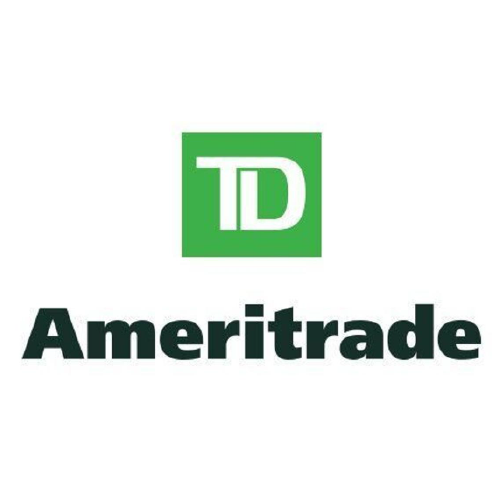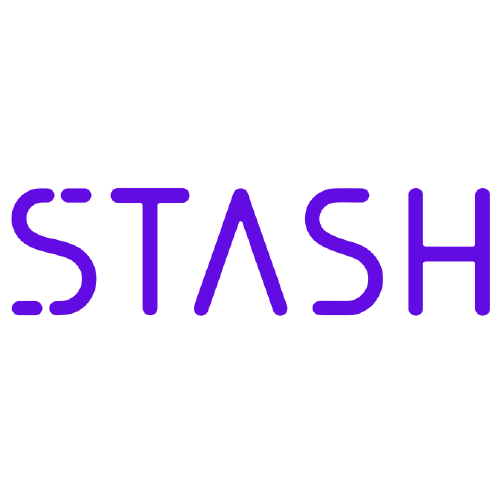A derivative is a complex type of financial security that is set between two or more parties.
TABLE OF CONTENTS
- What Is a Derivative?
- Understanding Derivatives
- Special Considerations
- Types of Derivatives
- Advantages and Disadvantages
- What Are Derivatives?
- Examples of Derivatives
- Main Benefits and Risks
What Is a Derivative?
The term derivative refers to a type of financial contract whose value is dependent on an underlying asset, group of assets, or benchmark. A derivative is set between two or more parties that can trade on an exchange or over-the-counter (OTC). These contracts can be used to trade any number of assets and carry their own risks. Prices for derivatives derive from fluctuations in the underlying asset. These financial securities are commonly used to access certain markets and may be traded to hedge against risk.
KEY TAKEAWAYS
- Derivatives are financial contracts, set between two or more parties, that derive their value from an underlying asset, group of assets, or benchmark.
- A derivative can trade on an exchange or over-the-counter.
- Prices for derivatives derive from fluctuations in the underlying asset.
- Derivatives are usually leveraged instruments, which increases their potential risks and rewards.
- Common derivatives include futures contracts, forwards, options, and swaps.
Understanding Derivatives
A derivative is a complex type of financial security that is set between two or more parties. Traders use derivatives to access specific markets and trade different assets. The most common underlying assets for derivatives are stocks, bonds, commodities, currencies, interest rates, and market indexes. Contract values depend on changes in the prices of the underlying asset.
Derivatives can be used to hedge a position, speculate on the directional movement of an underlying asset, or give leverage to holdings. These assets are commonly traded on exchanges or over-the-counter (OTC) and are purchased through brokerages. The Chicago Mercantile Exchange (CME) is among the world’s largest derivatives exchanges.
OTC-traded derivatives generally have a greater possibility of counterparty risk, which is the danger that one of the parties involved in the transaction might default. These contracts trade between two private parties and are unregulated. To hedge this risk, the investor could purchase a currency derivative to lock in a specific exchange rate. Derivatives that could be used to hedge this kind of risk include currency futures and currency swaps.
Exchange-traded derivatives are standardized and more heavily regulated than those that are traded over the counter.
Special Considerations
Derivatives were originally used to ensure balanced exchange rates for internationally traded goods. International traders needed a system to account for the differing values of national currencies.
Assume a European investor has investment accounts that are all denominated in euros (EUR). Let’s say they purchase shares of a U.S. company through a U.S. exchange using U.S. dollars (USD). This means they are now exposed to exchange rate risk while holding that stock. Exchange rate risk is the threat that the value of the euro will increase in relation to the USD. If this happens, any profits the investor realizes upon selling the stock become less valuable when they are converted into euros.
A speculator who expects the euro to appreciate compared to the dollar could profit by using a derivative that rises in value with the euro. When using derivatives to speculate on the price movement of an underlying asset, the investor does not need to have a holding or portfolio presence in the underlying asset.
Many derivative instruments are leveraged, which means a small amount of capital is required to have an interest in a large amount of value in the underlying asset.
Types of Derivatives
Derivatives are now based on a wide variety of transactions and have many more uses. There are even derivatives based on weather data, such as the amount of rain or the number of sunny days in a region.
There are many different types of derivatives that can be used for risk management, speculation, and leveraging a position. The derivatives market is one that continues to grow, offering products to fit nearly any need or risk tolerance. The most common types of derivatives are futures, forwards, swaps, and options.
Futures
A futures contract, or simply futures, is an agreement between two parties for the purchase and delivery of an asset at an agreed-upon price at a future date. Futures are standardized contracts that trade on an exchange. Traders use a futures contract to hedge their risk or speculate on the price of an underlying asset. The parties involved are obligated to fulfill a commitment to buy or sell the underlying asset.
For example, say that on Nov. 6, 2021, Company A buys a futures contract for oil at a price of $62.22 per barrel that expires Dec. 19, 2021. The company does this because it needs oil in December and is concerned that the price will rise before the company needs to buy. Buying an oil futures contract hedges the company’s risk because the seller is obligated to deliver oil to Company A for $62.22 per barrel once the contract expires. Assume oil prices rise to $80 per barrel by Dec. 19, 2021. Company A can accept delivery of the oil from the seller of the futures contract, but if it no longer needs the oil, it can also sell the contract before expiration and keep the profits.
In this example, both the futures buyer and seller hedge their risk. Company A needed oil in the future and wanted to offset the risk that the price may rise in December with a long position in an oil futures contract. The seller could be an oil company concerned about falling oil prices and wanted to eliminate that risk by selling or shorting a futures contract that fixed the price it would get in December.
It is also possible that one or both of the parties are speculators with the opposite opinion about the direction of December oil. In that case, one might benefit from the contract, and one might not. Take, for example, the futures contract for West Texas Intermediate (WTI) oil that trades on the CME and represents 1,000 barrels of oil. If the price of oil rose from $62.22 to $80 per barrel, the trader with the long position—the buyer—in the futures contract would have profited $17,780 [($80 – $62.22) x 1,000 = $17,780]. The trader with the short position—the seller—in the contract would have a loss of $17,780.
Financial Trading is not suitable for all investors & involved Risky. If you through with this link and trade we may earn some commission.
Cash Settlements of Futures
Not all futures contracts are settled at expiration by delivering the underlying asset. If both parties in a futures contract are speculating investors or traders, it is unlikely that either of them would want to make arrangements for the delivery of several barrels of crude oil. Speculators can end their obligation to purchase or deliver the underlying commodity by closing (unwinding) their contract before expiration with an offsetting contract.
Many derivatives are in fact cash-settled, which means that the gain or loss in the trade is simply an accounting cash flow to the trader’s brokerage account. Futures contracts that are cash-settled include many interest rate futures, stock index futures, and more unusual instruments like volatility futures or weather futures.
Forwards
Forward contracts or forwards are similar to futures, but they do not trade on an exchange. These contracts only trade over-the-counter. When a forward contract is created, the buyer and seller may customize the terms, size, and settlement process. As OTC products, forward contracts carry a greater degree of counterparty risk for both parties.
Counterparty risks are a type of credit risk in that the parties may not be able to live up to the obligations outlined in the contract. If one party becomes insolvent, the other party may have no recourse and could lose the value of its position.
Once created, the parties in a forward contract can offset their position with other counterparties, which can increase the potential for counterparty risks as more traders become involved in the same contract.
Swaps
Swaps are another common type of derivative, often used to exchange one kind of cash flow with another. For example, a trader might use an interest rate swap to switch from a variable interest rate loan to a fixed interest rate loan, or vice versa.
Imagine that Company XYZ borrows $1,000,000 and pays a variable interest rate on the loan that is currently 6%. XYZ may be concerned about rising interest rates that will increase the costs of this loan or encounter a lender that is reluctant to extend more credit while the company has this variable rate risk.
Assume XYZ creates a swap with Company QRS, which is willing to exchange the payments owed on the variable-rate loan for the payments owed on a fixed-rate loan of 7%. That means that XYZ will pay 7% to QRS on its $1,000,000 principal, and QRS will pay XYZ 6% interest on the same principal. At the beginning of the swap, XYZ will just pay QRS the 1% difference between the two swap rates.
If interest rates fall so that the variable rate on the original loan is now 5%, Company XYZ will have to pay Company QRS the 2% difference on the loan. If interest rates rise to 8%, then QRS would have to pay XYZ the 1% difference between the two swap rates. Regardless of how interest rates change, the swap has achieved XYZ’s original objective of turning a variable-rate loan into a fixed-rate loan.
Swaps can also be constructed to exchange currency exchange rate risk or the risk of default on a loan or cash flows from other business activities. Swaps related to the cash flows and potential defaults of mortgage bonds are an extremely popular kind of derivative. In fact, they’ve been a bit too popular in the past. It was the counterparty risk of swaps like this that eventually spiraled into the credit crisis of 2008.
Options
An options contract is similar to a futures contract in that it is an agreement between two parties to buy or sell an asset at a predetermined future date for a specific price. The key difference between options and futures is that with an option, the buyer is not obliged to exercise their agreement to buy or sell. It is an opportunity only, not an obligation, as futures are. As with futures, options may be used to hedge or speculate on the price of the underlying asset.
In terms of timing your right to buy or sell, it depends on the “style” of option. An American option allows holders to exercise the option rights at any time before and including the day of expiration. A European option can be executed only on the day of expiration. Most stocks and exchange-traded funds have American-style options while equity indices, including the S&P 500, have European-style options.
Imagine an investor owns 100 shares of a stock worth $50 per share. They believe the stock’s value will rise in the future. However, this investor is concerned about potential risks and decides to hedge their position with an option. The investor could buy a put option that gives them the right to sell 100 shares of the underlying stock for $50 per share—known as the strike price—until a specific day in the future—known as the expiration date.
Assume the stock falls in value to $40 per share by expiration and the put option buyer decides to exercise their option and sell the stock for the original strike price of $50 per share. If the put option cost the investor $200 to purchase, then they have only lost the cost of the option because the strike price was equal to the price of the stock when they originally bought the put. A strategy like this is called a protective put because it hedges the stock’s downside risk.
Alternatively, assume an investor doesn’t own the stock currently worth $50 per share. They believe its value will rise over the next month. This investor could buy a call option that gives them the right to buy the stock for $50 before or at expiration. Assume this call option cost $200 and the stock rose to $60 before expiration. The buyer can now exercise their option and buy a stock worth $60 per share for the $50 strike price for an initial profit of $10 per share. A call option represents 100 shares, so the real profit is $1,000 less the cost of the option—the premium—and any brokerage commission fees.
In both examples, the sellers are obligated to fulfill their side of the contract if the buyers choose to exercise the contract. However, if a stock’s price is above the strike price at expiration, the put will be worthless and the seller (the option writer) gets to keep the premium as the option expires. If the stock’s price is below the strike price at expiration, the call will be worthless and the call seller will keep the premium.
Financial Trading is not suitable for all investors & involved Risky. If you through with this link and trade we may earn some commission.
Advantages and Disadvantages of Derivatives
Advantages
As the above examples illustrate, derivatives can be a useful tool for businesses and investors alike. They provide a way to do the following:
- Lock in prices
- Hedge against unfavorable movements in rates
- Mitigate risks
These pluses can often come for a limited cost.
Derivatives can also often be purchased on margin, which means traders use borrowed funds to purchase them. This makes them even less expensive.
Disadvantages
Derivatives are difficult to value because they are based on the price of another asset. The risks for OTC derivatives include counterparty risks that are difficult to predict or value. Most derivatives are also sensitive to the following:
- Changes in the amount of time to expiration
- The cost of holding the underlying asset
- Interest rates
These variables make it difficult to perfectly match the value of a derivative with the underlying asset.
Since the derivative has no intrinsic value (its value comes only from the underlying asset), it is vulnerable to market sentiment and market risk. It is possible for supply and demand factors to cause a derivative’s price and its liquidity to rise and fall, regardless of what is happening with the price of the underlying asset.
Finally, derivatives are usually leveraged instruments, and using leverage cuts both ways. While it can increase the rate of return, it also makes losses mount more quickly.
Pros
- Lock in prices
- Hedge against risk
- Can be leveraged
- Diversify portfolio
Cons
- Hard to value
- Subject to counterparty default (if OTC)
- Complex to understand
- Sensitive to supply and demand factors
What Are Derivatives?
Derivatives are securities whose value is dependent on or derived from an underlying asset. For example, an oil futures contract is a type of derivative whose value is based on the market price of oil. Derivatives have become increasingly popular in recent decades, with the total value of derivatives outstanding currently estimated at over $600 trillion.
What Are Some Examples of Derivatives?
Common examples of derivatives include futures contracts, options contracts, and credit default swaps. Beyond these, there is a vast quantity of derivative contracts tailored to meet the needs of a diverse range of counterparties. In fact, since many derivatives are traded over the counter (OTC), they can in principle be infinitely customized.
What Are the Main Benefits and Risks of Derivatives?
Derivatives can be a very convenient way to achieve financial goals. For example, a company that wants to hedge against its exposure to commodities can do so by buying or selling energy derivatives such as crude oil futures. Similarly, a company could hedge its currency risk by purchasing currency forward contracts.
Derivatives can also help investors leverage their positions, such as by buying equities through stock options rather than shares. The main drawbacks of derivatives include counterparty risk, the inherent risks of leverage, and the fact that complicated webs of derivative contracts can lead to systemic risks.
Financial Trading is not suitable for all investors & involved Risky. If you through with this link and trade we may earn some commission.
Myanfx-edu does not provide tax, investment or financial services and advice. The information is being presented without consideration of the investment objectives, risk tolerance, or financial circumstances of any specific investor and might not be suitable for all investors.



















